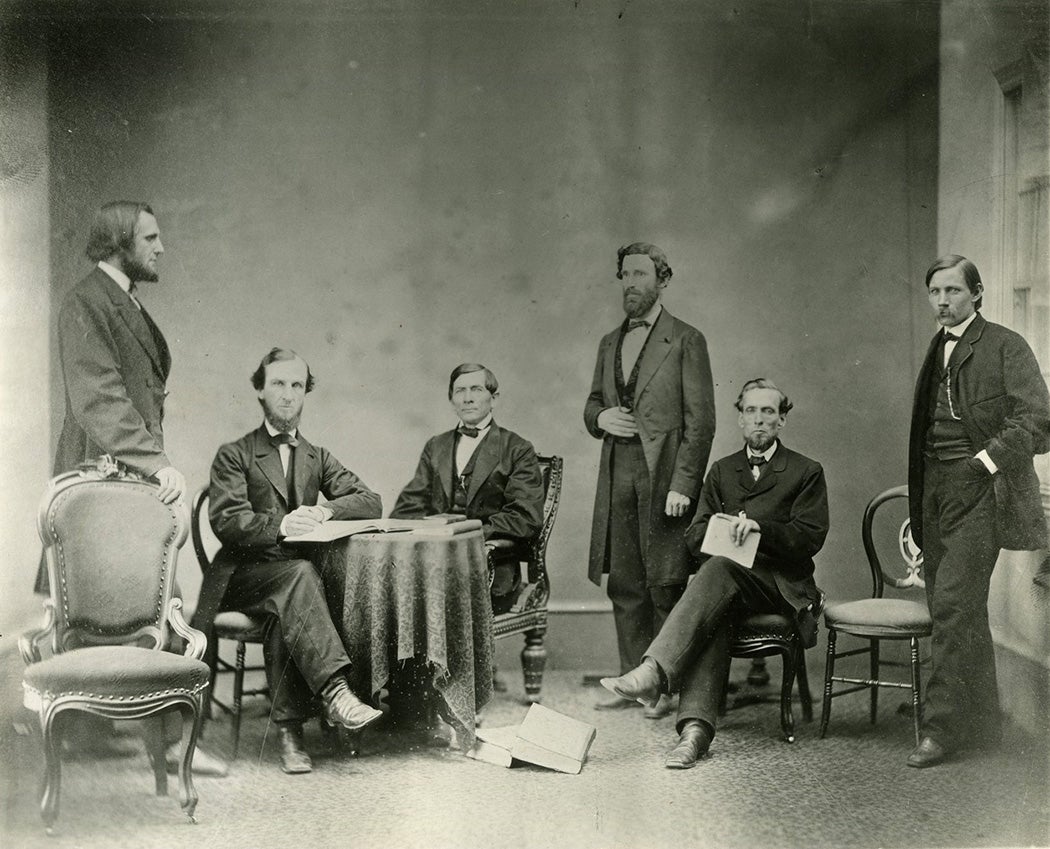With the Emancipation Proclamation, Abraham Lincoln declared freedom for individuals enslaved within most, but not all of the states: the border states of Delaware, Kentucky, Maryland, and Missouri were exempt from the declaration. These slave states remained loyal to the Union amidst violent opposition from pro-Confederate forces within and without. Hoping to keep them bound to the Union, Lincoln didn’t include them in the emancipation order—though plenty of enslaved people paid no attention to that technicality. The Proclamation’s “effects transcended its legal limits” explains scholar Michael E. Woods.
West Virginia is also usually classed as a border state, but it wasn’t actually a state when the Emancipation Proclamation was issued on January 1, 1863. The forty-eight breakaway Appalachian counties of western Virginia became a separate state with gradual emancipation written into its new constitution on June 20, 1863. The West Virginia-to-be was exempted from the Proclamation because slavery there was already on the way out, “mortally wounded” by the facts on the ground. Writes Woods,
Local slaves, white Unionists, and Federal soldiers collaborated, intentionally and inadvertently, to demolish slavery. They knew the Emancipation Proclamation’s influence exceeded its technical limits, but they did not need Lincoln to convince them to fight for liberation. Exemptions notwithstanding, West Virginia was a crucial battleground between servitude and liberty.
Virginia’s split into two states was precipitated by the Civil War. For many white western Virginians, the divide was over the Union, not slavery. To Unionist Virginians, slavery was more a metaphor than a cause, at least at first: “show those traitors in Richmond,” one western Virginian proclaimed, “that we are not to be transferred [out of the Union] like the…slaves on their plantations, without our knowledge and consent.”
“Military force was an essential catalyst for independence,” writes Woods, explaining that Confederate soldiers sent by Richmond to suppress Unionists were stymied by Union troops from the north and west. The local civil war was brutal: secessionists “decapitated and disemboweled Unionist rivals” as Union troops essentially mid-wived the birth of the Mountain State.
It wasn’t only white Unionists who looked to troops for protection. The presence of Union soldiers also meant that enslaved people began to free themselves.
In 1860, there were more than half a million enslaved people in Virginia, the vast majority of them in the eastern part of the state. In fact, there were more enslaved individuals in eastern Virginia than there were total inhabitants of what became West Virginia. Some 18,371 people lived as captives in the west, concentrated in the Kanawha River Valley, the Eastern Panhandle, and in southeastern region. General George McClellan, in charge of the Union troops in the region, had at first vowed to prevent any “interference” with slavery, but he couldn’t stop enslaved people from voting with their feet.
“Patterns of escape reflected bondspeople’s attention to political and military news,” writes Woods. For example, the appointment of General John C. Frémont to command in the region in March 1862 was taken as very good news. Frémont was known for issuing his own emancipation order, quickly rescinded by his higher-ups, in Missouri in August 1861. Under his watch in West Virginia, the number of self-emancipated people crossing the Ohio River “ballooned.”

In addition, beginning in August 1861, the First Confiscatory Act effectively meant that abolitionist Unionist troops took anyone who reached their lines, not just those who had been enslaved in Confederate service.
“Union officers confused by the law tended to err on the side of liberty,” notes Woods, including when it came to people enslaved by Unionist West Virginians. “Slavery collapsed more rapidly in practice than on paper.”
Union troops needed the emancipated as much as the emancipated needed Union troops. With mountains made for guerrilla warfare and divided white loyalties, freedmen made the most reliable sources of intelligence and scouts. A “potent cycle of black assistance, Union victory, and military emancipation was in motion.”
Weekly Newsletter
White and Black West Virginians “shared a common foe—proslavery Confederates who opposed statehood and emancipation—and their struggles for liberty became deeply intertwined.” Debate in Wheeling and Washington about how West Virginia would be admitted as a state was essentially out-run by the facts on the ground.
After statehood, West Virginians almost immediately started dismantling the legal underpinnings of slavery, first by repealing Virginia’s notorious 1860 slave code. Abolition formally came in February 1865, via both state law and the state’s ratification of the Thirteenth Amendment to the US Constitution.







